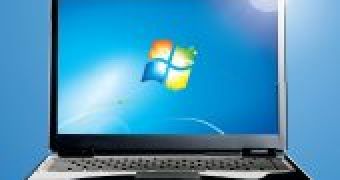Users running the latest iteration of Windows might experience a Black Screen when they attempt to unlock their machine in certain conditions, Microsoft warned.
According to the Redmond company, the issue impacts not only Windows 7 customers, but also those leveraging Windows Vista.
The problem is not likely to affect end users, since the PCs affected need to feature special security configuration specific of computer running in enterprise environments.
First off, both Vista and Windows 7 computers need to be running the “Aero” graphics mode.
In addition, the machines also have to sport some extra security restrictions as well as added security software. Microsoft explained that these configurations are often used by enterprises, or are being mandated by DISA (Defense Information Systems Agency) or DoD (Department of Defense) requirements.
In the specific scenario described above, an user also needs to lock the computer and leave it untouched for as long as it will take for the power policy to force the screen to go black, at least 20 minutes in the Balanced configuration.
Attempt to unlock the computer at this point will cause Vista and Windows 7 to present nothing but a Black Screen to the user.
“After the credential are entered the screen goes black, and remains black for as much as 10 minutes or longer.
“The machine is not “hard-locked”, as periodic disk-drive activity may be noted from the disk-drive indicator light on the computer, if so equipped.
“A problem with some layer of security software causes the Desktop Window Manager to wait for an unspecified amount of time,” Microsoft explained.
Microsoft is not offering an update or hotfix for this issue at this point in time. However, the software giant did document a workaround, which involves stopping and disabling the “Desktop Window Manager Session Manager” service.
But customers should be advised that turning off this service will also kill “Aero” graphics display. This means that features such as Aero Peek, Aero Snap, Aero Shake, and so on will all become unavailable.
There are additional solutions, enumerated by Microsoft:
“1. To disable this service:
a. Click the Start button, type “services.msc” and then press the ENTER key, or click the icon that comes up under “Programs” in the Instant Search box.
b. Locate and then double-click the Desktop Window Manager Session Manager service.
c. Locate the “Startup type” dropdown and change the value to “disabled”.
d. Locate and click the button labeled “Stop”.
e. Click the Apply button, and then click the OK button.
Alternatively you can run the following commands from an elevated CMD prompt to set the service properties of the Desktop Window Manager Session Manager service to not running and disabled:
net stop UxSms
sc config UxSms start= disabled
To return the settings for the Desktop Window Manager Session Manager service to normal via the CMD line:
sc config UxSms start= auto
net start UxSms
2. Updated display drivers may resolve this issue. You can determine the manufacturer of the display adapter by following these steps:
1. Click Start, and in the “Search Programs and Folder” text box, type in “MSINFO32” (without quotation marks) and press ENTER.
2. On the left-hand section called “System Summary” locate Components, and under Components locate and click on Display.
3. The right-hand section of System Information should now display information about the display system in the computer. The item called “Name” should indicate the type of display adapter.
4. At this point you can go to the Internet web site of the vendor, or the vendor of your computer to locate updated drivers.
5. In some cases you may be offered updated video drivers by running Windows Update.
6. If you are not sure of which drivers to install, contact the vendor of your computer hardware for assistance in locating an updated display driver package.
3. The final solution is to discover what layer of security software is causing the temporary blocking which renders the screen black and therefore unusable.
That layer of software would need to be uninstalled or updated to prevent the blocking condition in the Desktop Window Manager.”

 14 DAY TRIAL //
14 DAY TRIAL //